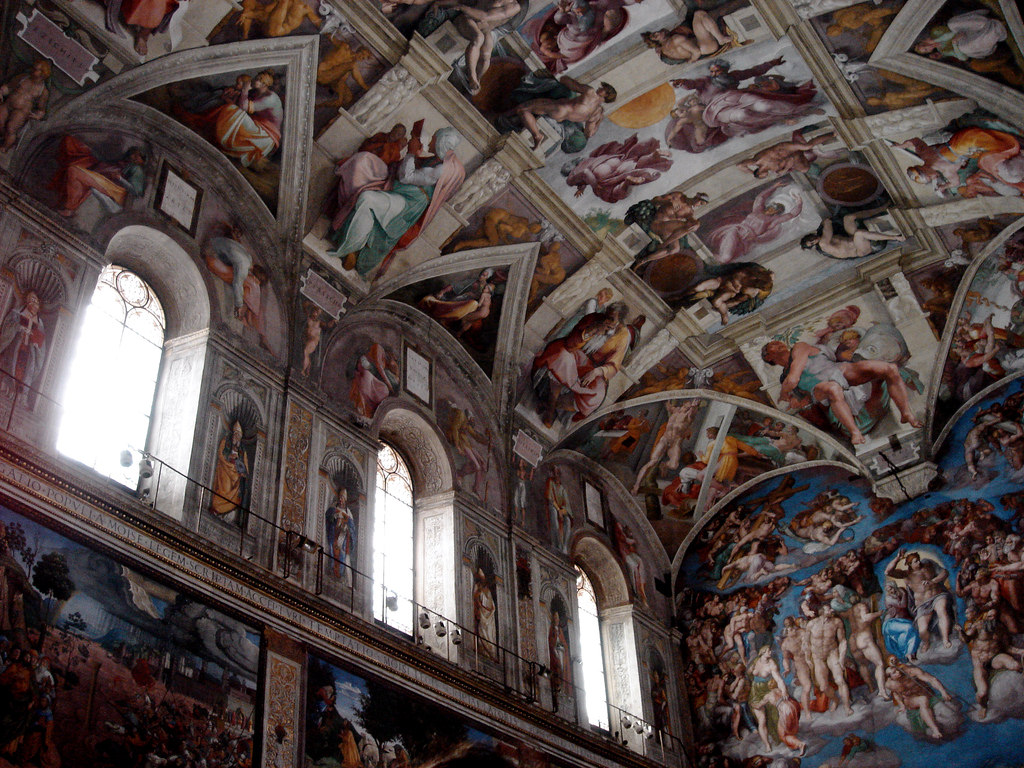Did you know that during the American Civil War, both Abraham Lincoln and Jefferson Davis wrote letters to the Pope trying to get him on their side? These letters are now stored in the Secret Vatican Archives, deep beneath the surface of Vatican City.
What else does the Catholic Church keep in these archives? And what are some other mysteries surrounding the smallest country in the world?
Hit the play button above to listen to the episode. You can also find us on iTunes, Android, Stitcher, GooglePlay, or RSS. Or keep reading below:
To understand why the Vatican can get away with being so secretive, you first have to understand how it's governed. It's not your typical government with checks and balances.
The Vatican is an absolute monarch, and the Pope serves as its leader for life.
Located within the Italian City of Rome, the holy city covers an area of 109 acres or about an eight the size of New York’s Central Park.
For much of its history, it fell under the rule of Rome or Italy, but in 1929, the city became its own independent nation.
Surprisingly, it was Italian Dictator Benito Mussolini who signed the Lateran Treaty, granting them independence.
Being such a small nation, today they only have around 590 citizens, and most of them are ordained clergymen.
The small country acts like most other nations, in that they issue passports, stamps, and license plates. But they don’t collect any taxes, so much of the Vatican City’s revenue comes from tourism.
And business is going well.
Over six million people a year come here to visit sites like the famous St. Peter’s Basilica.
The historic chapel was constructed about 500 years ago. And deep underground, beneath the alter of this grand basilica is the Vatican Necropolis, one of the most sacred sites of the Catholic Church.
It’s believed that at this very location is the gravesite of St. Peter, an important figure of the Christian faith and the first Pope.
The Necropolis, excavated in the 1940s, revealed a series of Mausoleums and the narrow alleyways between them.
Protected by Swiss Guards, the nearly 2,000-year-old site is a little known part of the Vatican.
The church limits visitors to the tombs, allowing only 250 people a day to go inside. I would say, this a must see for anyone going there.
To qualify, you’ll have to make reservations in advance, you also have to be 15 years old or older, and you have to dress appropriately.
If you don’t like underground grave sites, maybe the Sistine Chapel is more your style.
The extravagantly painted 14th century church was designed by renaissance artist Michelangelo.
Over the course of four years, he painted the massive ceiling. One particular section contains the most replicated religious works of art in the world, which you’d probably recognize. The Creation of Adam, as it’s called, depicts God reaching his finger out to Adam’s.
Also in this very building, is where leaders of the church vote for the new Pope after he’s died, or in very rare occurrences, resigns.
The last Pope to resign was Benedict the 16th in 2013. Today he’s considered the Pope Emeritus and lives in retirement. Before his resignation another pope hadn’t resigned in 598 years.
Now the men who get to choose the next pope are cardinals within the church. When voting for the new leader, they’re basically locked inside the chapel until one of them become Pope with a 2/3 majority vote.
In the latest election, the Sistine Chapel was swept for surveillance and listening devices, and Wi-Fi jammers were deployed to block any signals.
In one of the stranger instances of church history, a Cardinal became Pope by complete accident. This happened with in the year 1335.
Each Cardinal voted anonymously by writing their pick on a slip of paper.
But in many cases, when cardinals cast their first vote, they pick an unlikely candidate, to find out who the other cardinals are voting for. And they keep having votes until one of them has over two thirds support.
In 1335, several of the men cast what they thought was a throw away vote to a little known Cardinal from France. The man was considered the least likely candidate to become Pope, mainly because he wasn’t wealthy or very well connected. But in the first round of voting, he received the two-thirds majority and became Pope Benedict the XII.
With the Vatican being such a small country, the local Italian courts and prisons handle almost all the crimes committed there.
Except for five very special cases.
For that there’s the very secretive Apostolic Penitentiary.
Created in the year 1179, the court was established to deal with the church’s 5 worst offenses. And for over 800 years, the penitentiary was shrouded in mystery.
That is until 2009, when details surrounding these tribunals were revealed.
Of these five offenses, three can only be committed by priests. The first is if he reveals a sin confessed by someone else. The second is if he offers a confession service to their sexual partner. The third concerns a priest who’s been directly involved with an abortion, like paying for the procedure.
The other two sins can be committed by anyone. The first is desecrating the Eucharist. The Eucharist is typically blessed bread and wine that Catholics consider to be the actual body and blood of Jesus. The final sin is killing or attempting to kill the Pope.
The last assassination attempt took place in 1981, against Pope John Paul the II.
A man shot him four times in Vatican City, among a crowd of thousands, who were there to hear the pope’s weekly sermons.
He survived the attempt on his life, then later met with the assassin in prison and forgave him. John Paul II continued to serve as Pope for another 24 years.
As leader of the Church, the Pope isn’t technically allowed to own any possessions. But he does control all the assets of the organization. So anything he needs or wants is provided for him.
One of the things under the Pope’s control is the Secret Vatican Archives. This underground library contains over fifty miles of shelving. For centuries they were off limits to outsiders, but now only select scholars, journalists, and other academics are allowed inside.
And on the archive's 400th anniversary in 2012, they made 100 items available for public viewing for the first time.
These documents spanned 12 centuries of church history.
They include letters by the artist Michelangelo, as well as the decree excommunicating the founder of the protestant church, Martin Luther. There’s even correspondence regarding the trial of Galileo, who went against the churches official stance that the Earth was the center of the universe.
There are some people who suspect the Secret Vatican Archives contain evidence documenting the existence of demons and dark spirits. Also rumored to be hidden in there are additional books from the Bible written by Paul the Apostle, who authored 13 of the 73 books in the Catholic Bible.
The Vatican is also loaded with museums. They have over 20,000 items on display, so you’ll never run out of things see there.
Be sure to subscribe wherever you’re getting your podcasts, tell a friend or family member about us, and follow us on Instagram, Twitter, and Facebook where you can find more of our content. You can also find us on iTunes, Android, Stitcher, GooglePlay, or RSS.


























